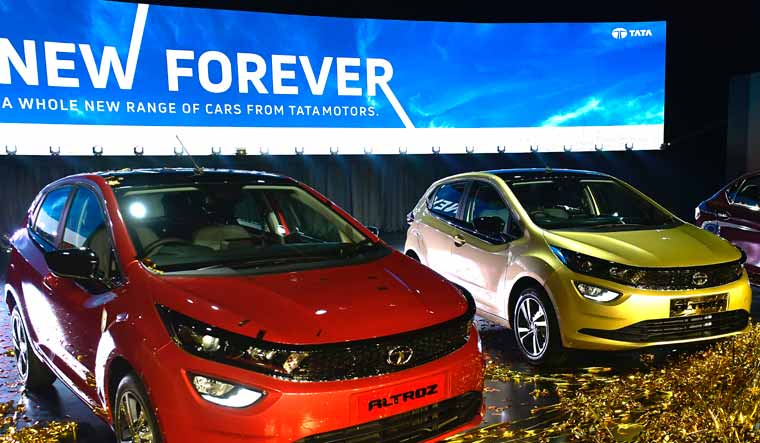Tata Motors is expanding its play in the passenger vehicle market, and is entering the premium hatchback segment with the launch of the Altroz on Wednesday.
Until now, Tata Motors was only selling the Tiago in the small car segment. The Tiago competed with the likes of Hyundai Santro and Maruti Suzuki's Wagon R. The Altroz, sits in a more premium segment and will take the Maruti Baleno, Hyundai Elite i20 and Honda Jazz head on.
The Altroz is the first product developed on Tata's new alpha platform and the second product based on its Impact Design 2.0.
The Altroz will be available at Rs 529,000 ex-showroom for the base BS6 petrol variant, and Rs 699,000 for the BS6 diesel variant.
With the BS6 fuel emission norms on the anvil from April 1, all auto makers are busy revamping their product line up.
On Wednesday, Tata Motors also launched the 2020 models of the Tiago hatchback, the Tigor sedan and Nexon compact SUV.
Apart from the new engines that meet BS6 emission norms, the models also come with various new features.
The company is debuting its own made for India connected car platform—Intelligent Real-Time Assist (IRA)—with the new Nexon and will eventually be rolled out to other Tata Motors models too.
Tata Motors is also betting big on safety of its cars. The Altroz recently received five stars in global NCAP ratings. The 2020 Tiago and Tigor have also received 4-star rating from global NCAP. The Nexon was the first made in India vehicle to have received 5-star ratings when it was launched in 2017.
The Altroz also comes feature packed with things like rain sensing wipers, cruise control and auto headlights. Dual airbags, Anti-lock Braking System (ABS), Electronic Brakeforce Distribution (EBD) and Corner Stability Control (CSC) are also standard.
The premium hatchback segment accounts for 26 per cent of the car market and had been growing at a compounded rate of over 30 per cent before the slowdown. With the launch of Altroz, Tata Motors will now cover 70 per cent of the market.
Over the next few years, the company will launch many new products based on its alpha and omega platforms, which will help it straddle across 90 per cent of the market.
"The way forward is to leverage investment in our two new architectures—alpha and omega—in order to build 12 to 14 different top heads, with a high degree of commonality, while at the same point of time de-risking the launches to do more for less and to build economies of scale," said Guenter Butschek, MD and CEO of Tata Motors.
Tata Motors is launching the Altroz at a time the market is going through a sharp slowdown in demand. The company has focused on reducing its channel inventories to ensure it doesn't have any BS4 vehicles left unsold from April 1. It had already stopped production of BS4 PVs and has also reduced BS4 stocks in the retail channels to just 7,000 units.
"We have completely shifted our production from BS4 to BS6, so each and every product that we roll out will be BS6 compliant," said Butschek.
Even as car makers are launching new products, the overall demand in the market is likely to remain subdued for some more time, with prices expected to go up significantly with BS6 vehicles.
Typically in December, car makers offer higher discounts and promotions to reduce their older stock and make way for new model year vehicles, which gives sales some boost. But the momentum hasn't continued in January.
"We had all crossed our fingers that we would see some continuation, some kind of recovery on retail in January. As we speak, January doesn't look like month of December. It almost feels like we have been pushed backward as far as demand is concerned," he said.
Butschek said the challenge the industry was facing was on two fronts—one was cyclical due to the wider economic slowdown and the other a structural shift in customer demand for new vehicle choices likes SUVs and new technologies.
He is hopeful that the industry will start to see a turnaround in the second half of next financial year as the measures announced by the government to revive the economy start to bear fruits.



